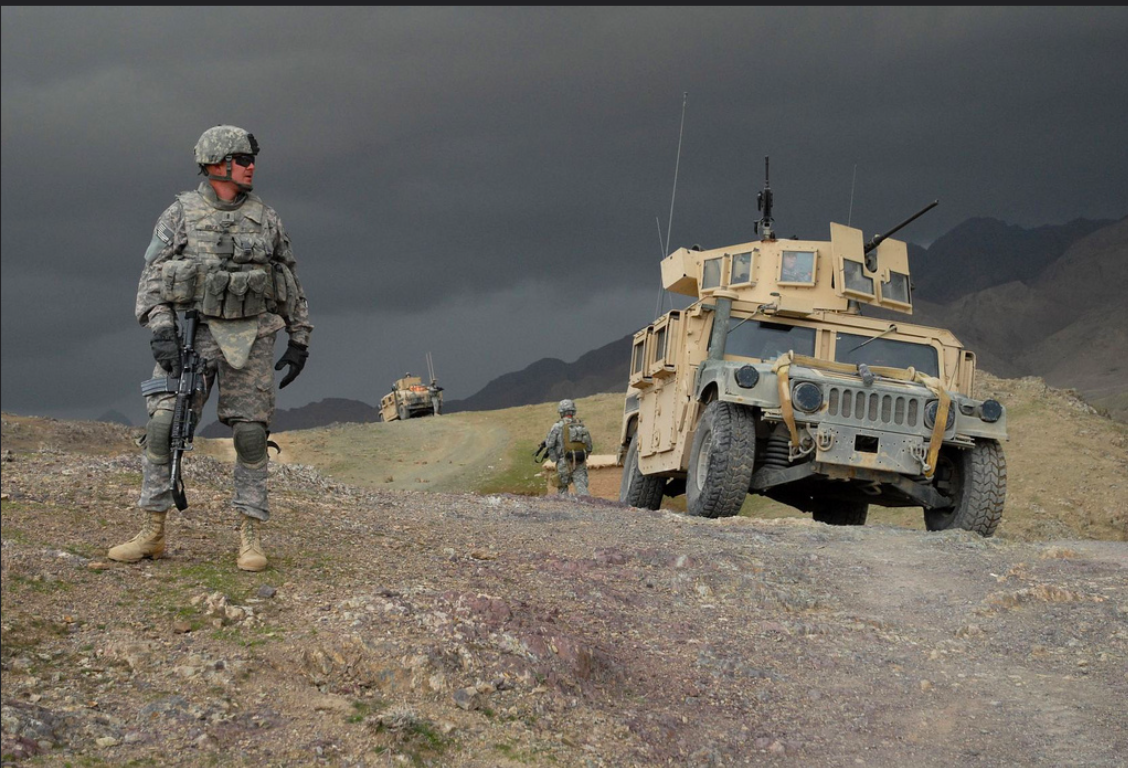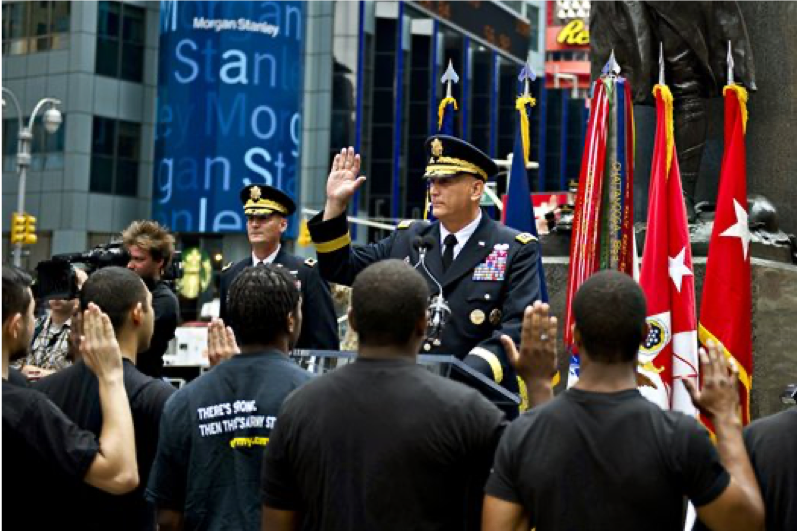
U.S. Army 1st Lt. Larry Baca from Charlie Company, 1st Battalion, 4th Infantry Regiment monitors the weather as a storm moves in outside of Forward Operating Base Lane, Afghanistan, on Feb. 19, 2009. DoD photo by Staff Sgt. Adam Mancini, U.S. Army.
Forewarned, Forearmed; to be prepared is half the victory – Miguel de Cervantes
My family and I were having a great time. That awesome show, Mythbusters, was going into it’s final season (with the original group). The hosts, Adam and Jamie, were doing a live tour. All of us are fans, especially my son and I. Mythbusters was one of the series that got me through my second tour in Afghanistan. The stage show was a lot of fun…until the moment it wasn’t. During the big finale, they brought out an audience member dressed in a suit of medieval armor. He stood the edge of the stage; between him and the audience, they placed a transparent wall of plexiglass. Behind him, pointed directly towards the audience, they placed a howitzer made of paintball guns.
You can see where this is going for a combat vet.
When they let that thing off, the back of my neck tried to crawl out of the top of my head. I turned nearly sideways in my seat, gripped my wife’s arm, clenched my teeth, and bore through it. The sound of paintballs hitting the plexiglass barriers sounded an awful lot like AK47 rounds hitting the windows of an MRAP. As long as it lasted…fifteen seconds that seemed like twenty minutes…I was straining to reman in my seat like a dog straining against a leash. Or, perhaps more appropriately, a dog reacting to a thunderstorm…and then it passed. As soon as its was over, I was able to calm myself down, shake it off, and go on with the night.
Preparation Versus Surprise
There is something about the unexpected that always throws us off our feet, especially when we’re surprised by something negative. I’ve had a lot of discussions lately about preparation and surprise. I recently had the privilege of attending a talk by Kevin Sullivan, George W. Bush’s communications director for two years; when talking about interacting with others, he said, “preparation is good, surprises are bad.” Similarly, in a recent podcast episode, Dr. Carmen McLean from the national center for PTSD talked about the difference between being prepared for something negative versus and being surprised by something negative. She said that a colleague always told here, “There is a difference between someone telling you to get ready to catch a ball, and someone walking through the door and beaning you with a fastball.”
The Neuroscience of Surprise
Science bears out the idea that being surprised by a negative stimulus is a bad thing. In a study to determine the neurological reactions to adverse events, researchers found that predictability controls the response of the amygdala to both pleasant and adverse events. If we are surprised by something positive, the amygdala amplifies the positive feeling; if we’re surprised by something negative, the amygdala amplifies that, as well. The amygdala, small, almond-shaped structures in our brain that control the positive and negative emotional reactions to events, has been proven to be a critical component to the way our brain reacts to traumatic events.
For many veterans, both with and without PTSD, increased activation in the amygdala is a result of repeated exposure to traumatic events. The amygdala is always “switched on,” accounting for the increased hypervigilance that many veterans experience. Couple a surprising negative event with a portion of your brain that is already operating at a high level, and you get the kind of response that I had to a paintball howitzer.
Negative Events Are Easier If You’re Prepared
In contrast to the amygdala controlling your emotions, the prefrontal cortex..the front part of our brain…is involved in emotional control. Consider the amygdala and hippocampus as the “lower” parts of our brains, and the prefrontal cortex as the higher front part of our brain. I often explain it to the veterans I work with in this way: the lower part of our brain is the gas pedal, which revs the engine when the green light goes on. The front part of our brain acts more like a governor in an engine, a speed limiting device that keeps the engine at a safe operating level.
If we are prepared for a something negative, then our prefrontal cortex is already engaged. That’s what Dr. McLean is referring to when she says, “I’m going to throw you a ball. Okay? Get ready…” When that happens, our brain gets prepared for the event, and the impact of the runaway amygdala is reduced. We are able to react more coherently to an event if we have an understanding that it’s about to happen. Consider the paintball howitzer event above again; recalling the story as I write this, I have none of the reactions that I did when it happened. Because I was prepared.
Being Prepared Doesn’t Always Mean Being On Guard
There’s a difference between prepared and always being on guard. We can’t walk through life always thinking the worst is going to happen, because that’s what we’re always going to see. It’s as if we are always walking around with an umbrella, waiting for the storm. If it rains after three weeks, we tell ourselves, “Ha! I was ready for it!” What we don’t realize, though, is that we missed three weeks of beautiful weather waiting for the rain.
Sure, sometimes someone is going to walk in the room and throw us a curveball. We may not be ready for it, and if we’ve experienced a bunch of negative events in our life, our brains will react in a big way. But if we can’t engage the front part of our brain before the event, we can certainly do so quickly afterwards. The paintball howitzer? I didn’t let it ruin my night. It was a sudden storm, violent and quick, but it passed just as rapidly as it came. I didn’t throw the family in the car, rush home, and lock us all in a bunker. I shook it off, took the kids out for some ice cream, and chalked it up to the life of a combat vet.
Humans have the amazing ability to control our own emotions; we just have to get out of our own way to do so.
Want to keep up with all of the Head Space and Timing content? Subscribe Here

The Head Space and Timing Blog is supported by the Colorado Veterans Health and Wellness Agency, a 501(c)3 Nonprofit in Colorado Springs, Colorado. The goal of the CVHWA is to provide military culturally competent mental health counseling to veterans and their spouses, regardless of characterization of discharge, time of service, or era of service. Our vision is to assist veterans to identify and remove barriers to their mental, physical, emotional, and behavioral wellness. For questions or inquiries, contact us!


